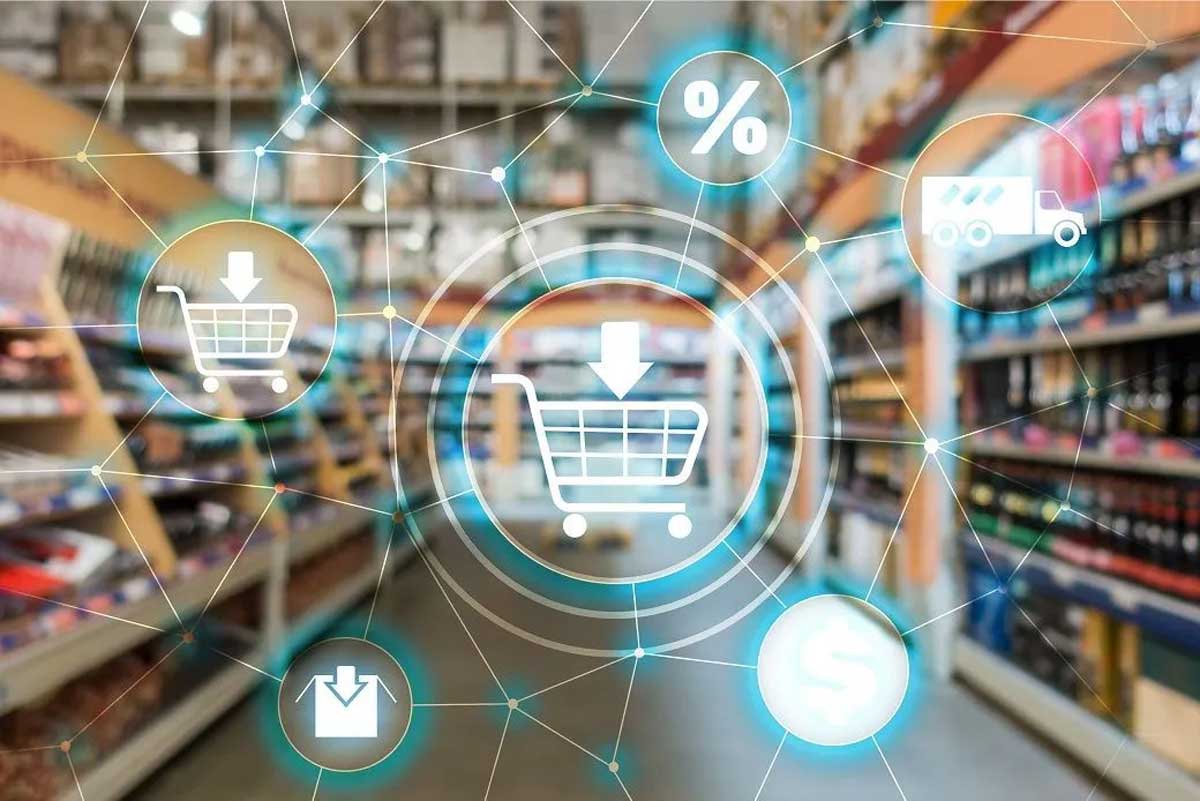Since it enables companies to link their goods and services to consumers, distribution marketing is crucial for marketers to consider. Wholesalers, merchants, distributors, and the internet, are some examples of distribution channels.
What Is Distribution Marketing?
Distribution marketing and distribution channels are how businesses put their goods and services in front of customers. Additionally, it outlines the payment process from the final customer to the initial vendor. Products and services can sometimes reach consumers through various short and long-distance methods.
What Are Direct and Indirect Channels of Distribution Marketing?
There are two different distribution channels in marketing: Direct and Indirect.
In contrast to an indirect channel, which allows customers to acquire products via wholesalers or retailers, a direct channel lets customers buy directly from the producer.
The price of a commodity may rise if there are more middlemen in the distribution chain. A direct channel, on the other hand, may result in cheaper costs for customers because they purchase directly from the producer.
Types of Distribution Channel
There are three main types of distribution channels:
The first channel includes the four elements; producer, wholesaler, retailer, and customer. This channel is the most extensive. An example is the wine industry. In this type of channel, wineries are not allowed to sell directly to retailers due to laws of alcohol prohibition.
It follows the three-tier system, which calls for the vineyard to sell its goods to a wholesaler before passing them on to a retailer. After that, the store sells the item to the final customers.
In the second channel, there is no role for the wholesaler. The manufacturer sells the items straight to the retailer, who then sells them to the final customer. This indicates that there is just one middleman in the second channel.
The third channel is linked to the customer directly, where the manufacturer sells the product now to its customer. An example would be Amazon selling kindle to its customers.
How To Choose The Right Distribution Channel?
It is crucial to choose a suitable channel for your business requirements. The channel should align with the vision of an organisation’s strategic aims, including its general purpose.
The distribution strategy should benefit the consumer. Companies can select the best channel by responding to certain questions like whether talking to the sales representative is preferable to the customer or if they prefer to make a hassle-free online purchase instead.
The second thing businesses should consider is how swiftly they desire their final products to reach the customer. While some items, like meat or fruit, are better serviced by a direct distribution route, some may profit from an indirect one.
The distribution channels used by a particular business, such as selling things online and through retail, shouldn’t compete with one another. Companies should plan their strategies to prevent one channel from dominating the other.
Here are the 8 Effective Distributing Channels In Marketing!
Marketing professionals can choose the desired business outcomes for their businesses by considering distributing channels in marketing.
1. Direct Sales
Businesses can offer goods and services to clients directly through their shops, sites, or platforms for merchants. This arrangement works effectively for companies like bakeries, where items are manufactured on the same grounds as where they are sold.
Benefits of Direct Sales
- Customers might feel connected to the firm since they know it prefers to engage with them.
- Businesses can fully manage the consumer experience and distribution channels through direct sales. Because they have to deal with the retailer, the direct channel is more effective in solving any issues.
- Direct sales are cost-effective because they don’t have to spend extra money on the middle man for any services. This helps in lowering the costs.
2. Retailer
Among the most well-liked and efficient distribution methods is a retailer. Supermarket chains, grocery stores, and big-box retailers are examples of retailers. Manufacturers associated with retailers can sell their products in supermarkets or online.
Benefits of Retailer
- One important advantage of retailers is that customers can physically buy the product. They can check the product themselves and even test them for assurance.
- Consumers can learn about items from retailers that they were unaware of.
- Advertisers might collaborate with retailers to find the most appropriate product demos and marketing materials to make their items more attractive.
- People typically show loyalty to the retailers.
3. Independent Distributors
Independent distributors are agents who supply products to retailers.
Benefits of Independent Distributors
- Firms do not have to pay for the upkeep of their storage facilities because of distributors store items at their factories.
- Distributors have built up connections with stores that they can convince to buy their goods. The distributors present the most responsive customers with these items using these connections.
4. Reseller
Resellers and distributors are strikingly similar, but the difference is that resellers supply to the clients directly. Resellers don’t store the products. Instead, they focus on online selling. On every purchase, they receive a commission from the price, and then they arrange for the items to be shipped straight to the consumer from the producer.
Benefits of Reseller
- Resellers are more cost-effective. They are affordable because they do not have to promote their products.
- After forming a partnership with a well-known reseller, a company’s products could become more visible to consumers after allying with a well-known reseller.
- Some resellers provide customers with extra rewards, which might enhance the desirability of their purchases.
5. Wholesaler
The wholesalers make bulk purchases and sales. Wholesalers, who sell their goods to retail establishments, can be a link in the marketing distribution chain. Furthermore, many wholesalers now conduct direct sales to the customers digitally and in big open warehouses.
Benefits of Wholesaler
- They frequently offer far fewer goods than shops because they deal in massive volumes.
- Wholesalers can assist firms in moving their products quickly by reselling in bulk.
- Businesses might benefit from their extensive supply-chain expertise and contacts.
6. Intensive Distribution
Intensive Distribution involves selling products through a large number of different channels. This marketing distribution strategy is frequently used with well-known, affordable items like soda or cold drinks.
Benefits of Intensive Distribution
- Businesses may reach a considerably bigger audience by selling at several different locations as opposed to just one retail chain.
- Consumers get used to the items they frequently see. Intensive Distribution may be a good strategy to develop confidence since it consistently places things in front of customers.
- Due to their accessibility, businesses may frequently sell their goods to customers looking for less affordable alternatives to their items.
7. Exclusive
Exclusive Distribution is a popular choice for expensive items, but intensive distribution advantages more reasonably priced products.
Benefits of Exclusive Distribution
- Products may seem more prestigious thanks to exclusive distribution agreements, which spurs curiosity.
- While working with a specific channel, firms have more control over the production of their products.
- They have the liberty that their clients enjoy the finest experience possible; they might establish strict regulations for the third-party distributor.
8. Selective Distribution
Selective Distribution aims at providing a level field between exclusive and intensive Distribution. Businesses who choose selective Distribution personally pick several distribution channels.
Benefits of Selective Distribution
- Managing a small number of distribution channels enables organisations to deal with various aspects of the sales process.
- Consumers perceive a product as more exclusive and unique when it is scarce.
- More customers see items through selective Distribution than through exclusive Distribution.
Reverse Distribution Channel
If customers get faulty goods or need to exchange online-purchased clothing or footwear that doesn’t fit, they must depend on reverse distribution. In this situation, the consumer is in charge of returning the goods and must obtain instructions from the manufacturers.
Ways On How To Define Distribution Channels For Your Product

You are now aware of the many categories of mediators and distribution networks. All of this, however, is useless if you don’t know how to choose the right channel for your business.
Here are crucial tips that will help you in making a decision:
Benchmarking
To start, you should investigate the best practices that your opponents use. This is called benchmarking. Discovering your opponents’ distribution strategies will help you choose a comparable plan for your own business.
Project Review
Reviewing the project or stream is the crucial step. Examine any faults, consider how procedures could be improved, and modify the project to fit the demands and specifics of the kinds of deals you make.
Costs And Benefits
The price of a distribution network is a significant consideration. It is advisable to look for the best deals. It is not sufficient to have a rough notion of the expenses. You can keep track of every expense and decide whether the advantages of the network you choose are worthwhile.
Location
Last but not least, think about where the intermediaries (whether they be distributors, wholesalers, retailers, or resellers) are located. If you cater to a certain market segment, your goods must always be marketed in the area where your target customer is.
Due to the extensive growth of e-commerce over the past two decades, suppliers and makers may now offer their products on online marketplaces. For service providers, the internet is a great tool!




